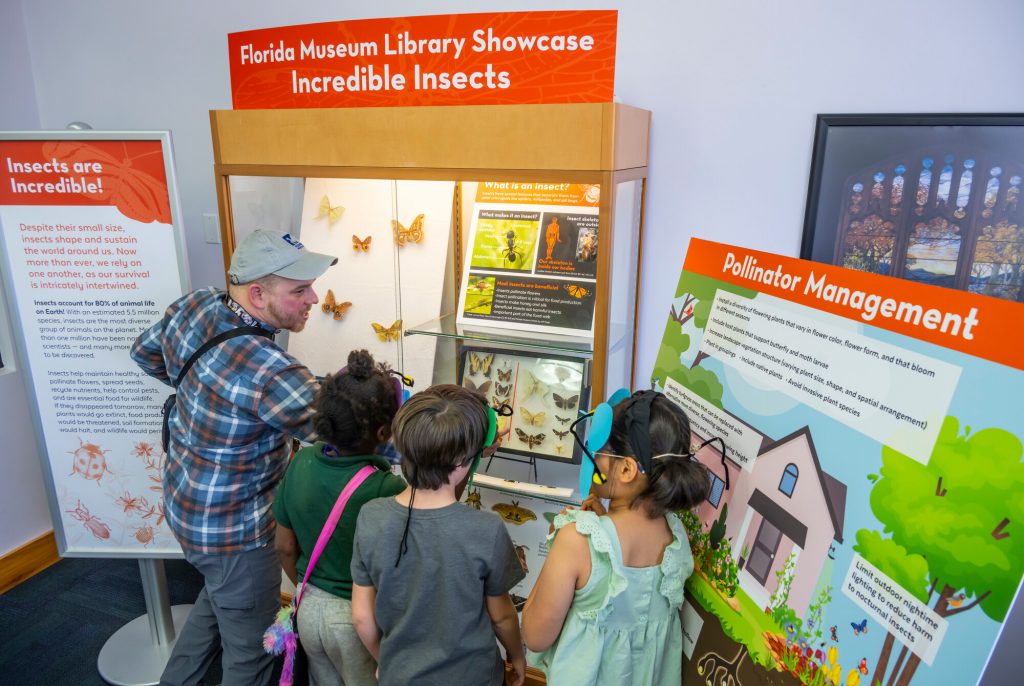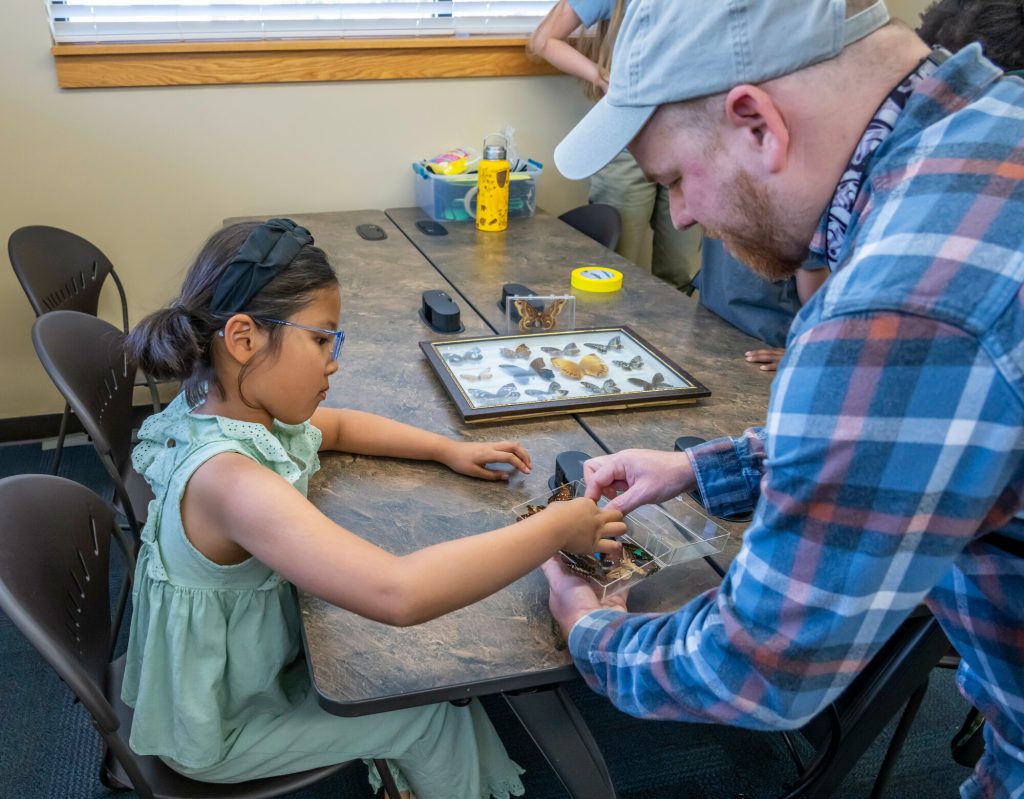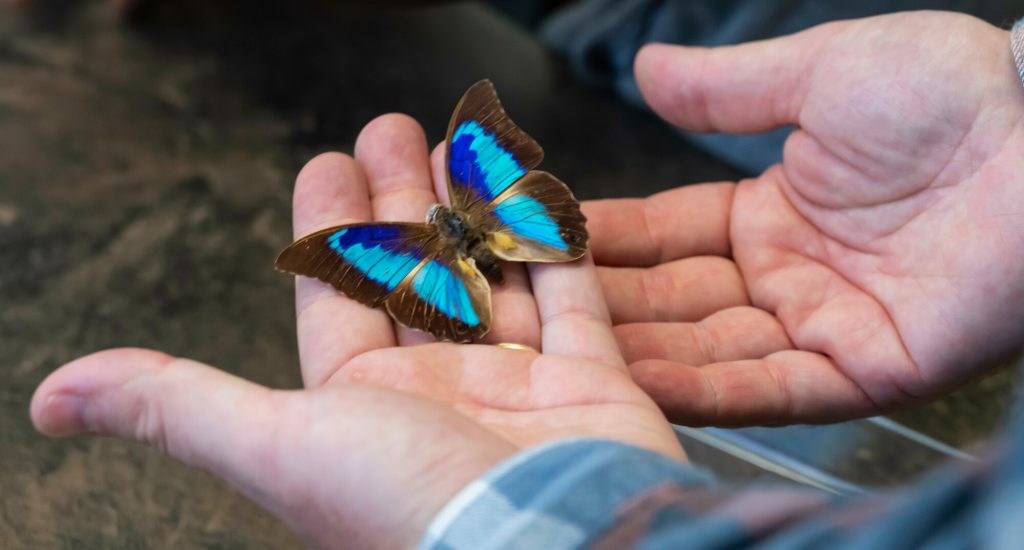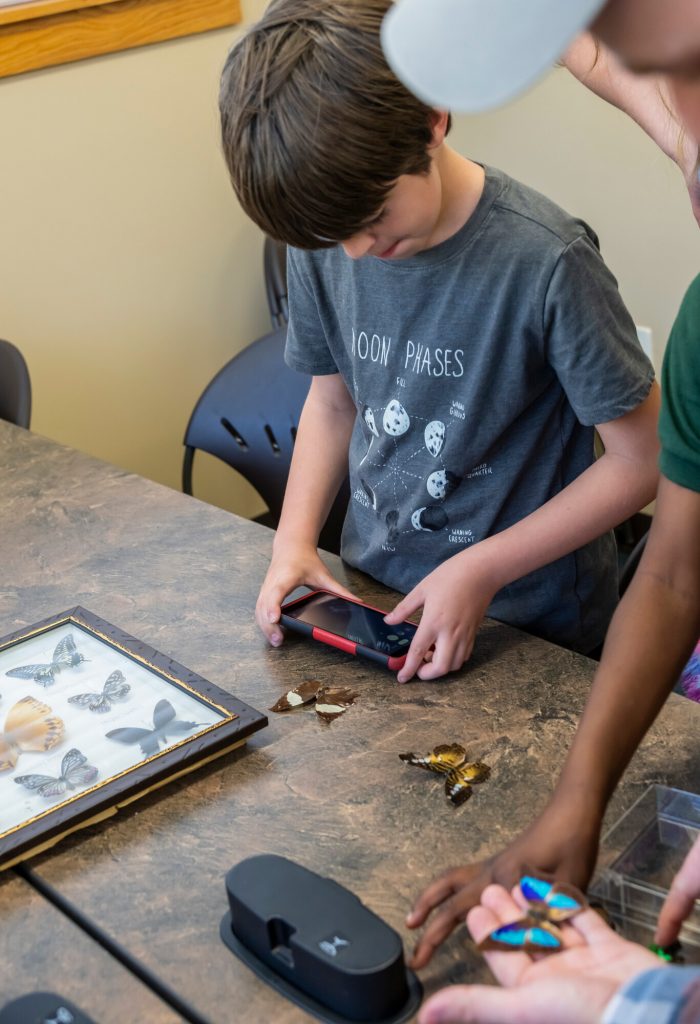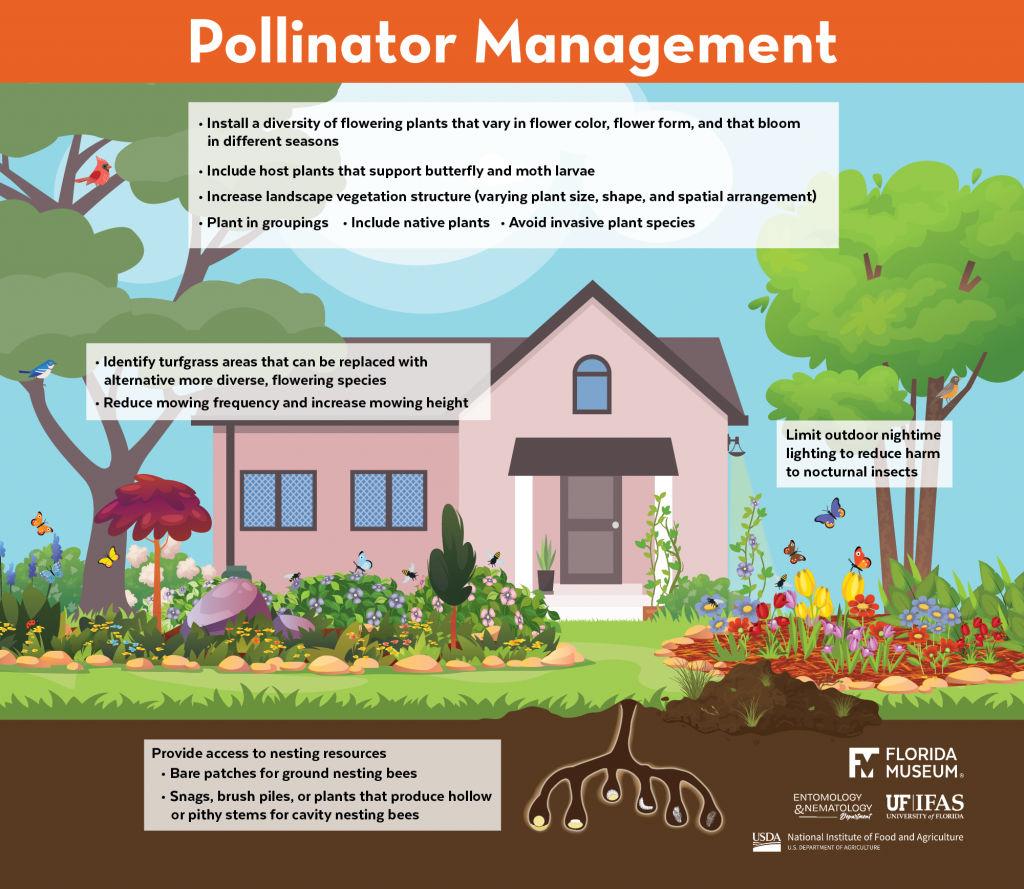We definitely love to buzz about pollinators! Our friends at the Alachua County libraries invited us to bring Museum treasures to select branches this year. We knew we had to start with our favorite incredible insects!
Each Florida Museum Library Showcase is a slice of an exhibit at a different branch around the community. They are month-long themed displays that feature specimens, artifacts and objects from our collections to help tell the story of Florida’s natural history.
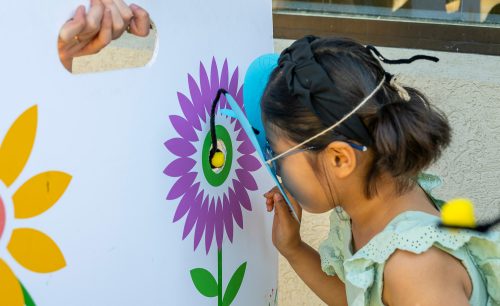
We held a small kick-off event to unveil the Florida Museum Library Showcase: Incredible Insects on March 7, 2025, at the Cone Park Library Branch. A bunch of kids and their families joined us to transform into butterflies and pollinate plants, as well as learn about how important insects are to our lives.
Look for more Museum Showcases at library branches in future. Hint: we have a lot of pretty shells here at the Museum!
Insects are incredible!
We featured some important insect info in our first showcase in this series. Why did we want to talk about insects during March’s showcase?
Despite their small size, insects shape and sustain the world around us. Now more than ever, we rely on one another, as our survival is intricately intertwined.
Insects account for 80% of animal life on Earth! With an estimated 5.5 million species, insects are the most diverse group of animals on the planet. More than one million have been named by scientists — and many more have yet to be discovered.
Insects help maintain healthy soil, pollinate flowers, spread seeds, recycle nutrients, help control pests, and are essential food for wildlife. If they disappeared tomorrow, many plants would go extinct, food production would be threatened, soil formation would halt, and wildlife would perish.
Pollinator Management
- Install a diversity of flowering plants that vary in flower color, flower form, and that bloom in different seasons
- Include host plants that support butterfly and moth larvae
- Increase landscape vegetation structure (varying plant size, shape, and spatial arrangement)
- Plant in groupings
- Include native plants
- Avoid invasive plant species
- Identify turfgrass areas that can be replaced with alternative more diverse, flowering species
- Reduce mowing frequency and increase mowing height
- Limit outdoor nighttime lighting to reduce harm to nocturnal insects

